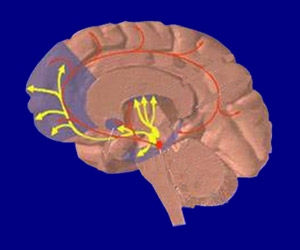Four genes that are involved in the development of Tourette syndrome have been identified by a study, paving the way for better treatment.
- A research team, with members from multiple research centers, has identified four genes that are involved in the development of Tourette syndrome.
- WWC1 is found to have 90% probability in the development of the syndrome.
- Identification of the cause will help in developing effective treatment methods for the condition.
- The first “high-confidence” gene that was found to increase the risk of Tourette syndrome
- Three other probable risk genes
Rare Variants to Identify Mechanism
The scientists had previously used similar techniques to identify the genetic basis of autism spectrum disorders, resulting in considerable advancements in autism research over the past five years.In order to identify rare variants, the regions of the genome that code for protein were compared between Tourette affected children and their parents. This step was carried out to identify new variations or mutations that are not transmitted from parents, but those that occur at conception. The biological effects of denovo variants or spontaneous variants are stronger than effects of variants that have been passed down generations.
Dr. Jeremy Willsey who is the co-author of the study said that if the genes under study were found to increase the risk for Tourette’s syndrome, they could then be used to develop better treatment methods.
Analyzing Genomic Data
The genomic data was analyzed by the research team- There were a total of 311 "trios" that comprised children who had Tourette disorder and their parents who were mostly free from the disorder.
- The analysis showed a strong association between de novo signaling and the disorder.
- A replication study was carried out on 173 trios and the same results were obtained.
- 12 % of Tourette disorder cases involved de novo variants.
- The de novo variants affected nearly 400 different key risk genes.
Key Genes Associated With Tourette Disorder
The genetic data from the two studies were combined, which led to the identification of four genes expressed in the brain that were significantly associated with this disorder.- WWC1: also known as KIBRA had a 90% probability of being associated with Tourette’s disorder. This gene is known to be involved in brain development, the brain’s response to estrogen and memory.
- FN1 and CELSR3: These are involved in brain circuitry development.
- NIPBL or Delangin: NIPBL is involved in gene expression regulation in the brain.
NIPBL gene is also involved in the development of
- Obsessive-compulsive disorder
- Cornelia de Lange syndrome
- Anxiety
- Attention deficit/hyperactivity disorder
Tourette Syndrome
This is a neurological disorder which is characterized by classic symptoms of repetitive and involuntary movements, along with vocalizations called tics. It is named after Dr. Georges Gilles de la Tourette, who was a leading French neurologist and who first described the condition in an old woman.The symptoms are initially identified between 3 and 9 years and usually occur more often in males than in females. 50% of the patients may also have attention deficit hyperkinetic disorder. The voice tics include throat clearing, snorting, sniffing, squeaking, grunting, sucking, puffing, barking and other sounds. These tics are increased during periods of excitement and lowered when carrying out an activity or sleeping.
- 200,000 Americans have a severe form of Tourette syndrome
- One in a 100 people worldwide have mild symptoms
References:
- Tourette Syndrome Fact Sheet - (http://www.indianjpsychiatry.org/article.asp?issn=0019-5545;year=2011;volume=53;issue=1;spage=66;epage=68;aulast=Raj)
- Tourette's disease with impulse control disorder - (https://www.ninds.nih.gov/Disorders/Patient-Caregiver-Education/Fact-Sheets/Tourette-Syndrome-Fact-Sheet)











